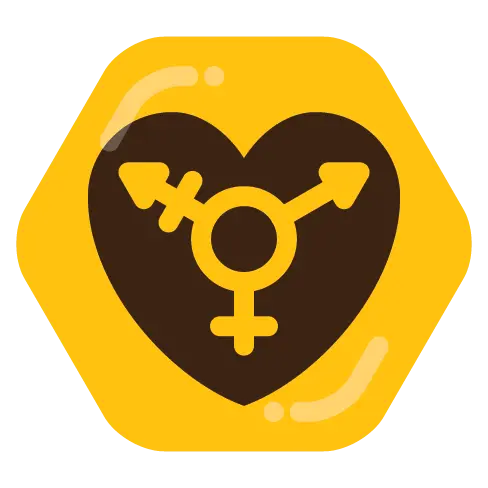I’ve recently begun going through a bit of a personal renaissance regarding my gender, and I realized my numbers-focused brain needs something to quantify gender identity, both for myself and so I can better understand others. I also just don’t like socially-constructed labels, at least for myself.
So, using the Kinsey Scale of Sexuality as inspiration, and with input from good friends, I made up my own Gender Identity Scale.
- Three axes: X, Y, and Z
- X: Man (not necessarily masculinity), 0 to 6
- Y: Woman (not necessarily femininity), 0 to 6
- Z: Fluidity, 0 to 2
- X and Y axes’ numbers go from
0 - not part of my identityto6 - strongly identify as - Z axis’s numbers go from
0 - non-fluidto2 - always changing
Example: The average cis-man is 6,0,0, the average cis-woman is 0,6,0, and a “balanced” nonbinary person might be 3,3,1, or 0,0,0, or 6,6,2…
Personally, I think I’m about a 3,2,1 - I don’t have a strong connection to either base gender, but being biologically male, I do identify a bit more as a man. I also feel that I’m somewhat gender-fluid, but not entirely so. I honestly don’t fully understand gender fluidity yet, so the Z-axis may require some tweaking.
Does this make sense? Can you use this to accurately quantify your own gender identity? I wanna know!


When it comes to representing gender graphically, i like to think that gender is best represented as an n dimensional graph, where as n approaches infinity the graph approaches “true” (whatever that means) representation of gender.
If we wanted to represent it mathematically, it could probably be represented by a multinomial logistic equation, but I think what we need to keep in mind is that the equation at best would give you an estimate of probability that someone would identify with a particular gender. How much each weight would matter for each person would be highly individual as some may view particular traits such as assertiveness with one gender identity or another even under very similar circumstances (similar location of birth, cultural background, education, etc.). We would also need to keep in mind that some genders are much more likely to be identified as within certain cultures as they do not exist directly within other cultures (Hijra or Māhū for example) and that there would be different equations for gender identity, gender expression, and gender privacy/openness.